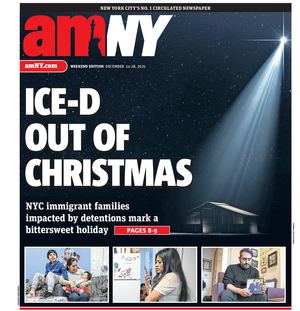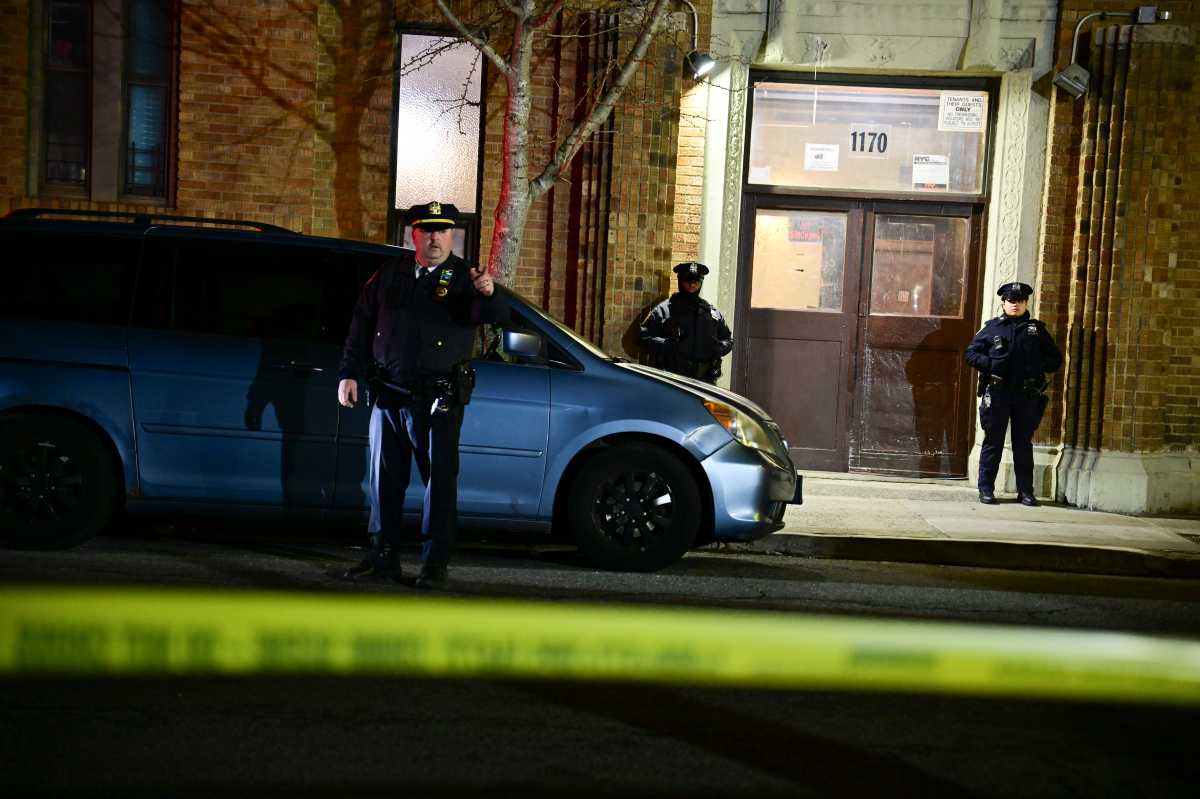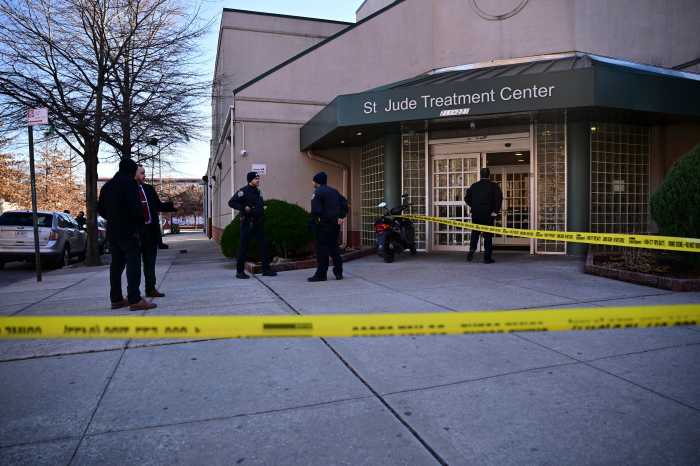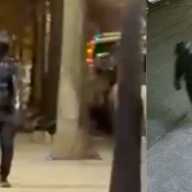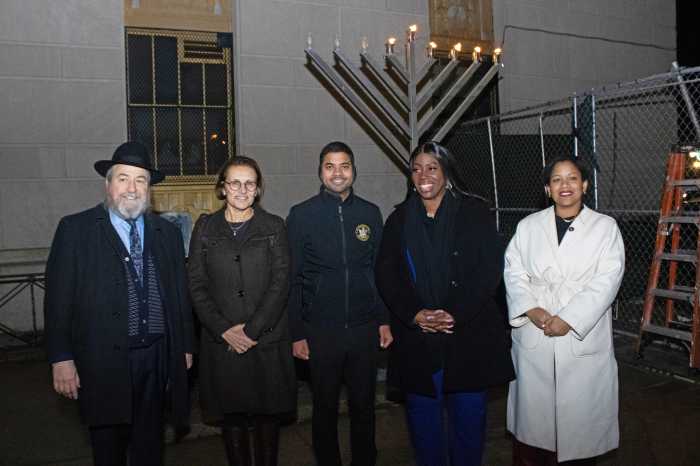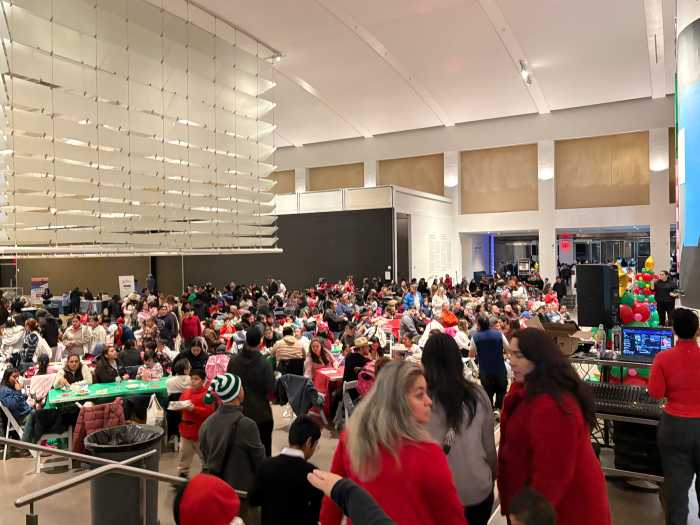BY ZACH WILLIAMS | Occupy Wall Street turned a corner last week as activists sought to expand their support base in the wake of recent setbacks to the movement whose focus is on social and economic justice.
In the last week, labor unions, farmers, AIDS activists and others joined occupiers in actions throughout Lower Manhattan as the movement sought to reassert itself following police raids on “Occupy” encampments across the country.
While occupiers in NYC have expanded their outreach beyond Downtown, they face challenges in achieving a level of visibility comparable to three weeks ago when their encampment in Zuccotti Park was alive and thriving.
The Nov. 15 NYPD raid spurred them to shift from a reliance on long-term occupation to a more decentralized approach that emphasizes specific themes in different places, occupiers said.
“They are all taking small slices of the problem and drawing attention to how the corruption of Wall Street and the government affects people,” said Linnea Palmer Paton, a member of the press team working group.
“It really shows the breadth of this movement and how much support there is across a variety of people,” said Paton.
But some outside the movement said its goals remain vague. According to Ed Brown, an employee at Morgan Stanley on Wall Street, a lack of central leadership continues to hamper the movement.
“They should have come up with issued demands, had someone that coordinated it, made it more structured, more organized,” Brown said. “You always need to have a structure of leadership, a voice of the people.”
But the lack of a leadership-based hierarchy did not keep occupiers from organizing in new ways this last week, Palmer Paton said. An initiative, which brought Occupy Wall Street activists to East New York Tuesday, in opposition to home evictions and foreclosures was just one part of a national effort which for the first time was jointly organized by occupiers across the country, she added.
“In the past we would put out an action then other occupations would hear about it and plan their own which is different than what we can do now, she said. “We [now] have the capacity to organize together.”
The “day of action” followed a week of demonstrations when occupiers downtown rallied with supporters to draw attention in separate events to agricultural, health, housing and labor issues.
Farmers from across the country joined occupiers Sunday in a march for urban-rural solidarity against corporate control over agriculture. Hundreds participated in the action which began near Tompkins Square Park and ended at Zuccotti Park which remains a prominent symbol for the movement.
Other actions meanwhile concentrated on making the presence of the movement better known in less conventional ways.
Dozens of acts performed before activists and tourists as part of an “Occupy Broadway.” A slate of performances occupied Paramount Plaza near Times Square from Friday to Saturday evenings including “Hair” co-author James Rado and actress Kathleen Chalfant as well as several dozen other acts such as the Reverend Billy and the Church of Stop Shopping.
Performing, like occupying, empowers an audience as much as a performer, said Mike Daisey during a monologue performance.
“The trick to holding a space is to not hold it at all,” he said. “The trick is to give it back to the people who owned it in the first place which would be your audience.”
The carefully-organized events resulted in little friction with law enforcement in contrast to measures taken by other activists who preferred more confrontational approaches.
A closer relationship among occupiers and AIDS activists led to a demonstration Dec. 1 that temporarily blocked traffic at Broadway and Park Place. NYPD officers arrested a handful of demonstrators who refused to disperse.
The possibility of establishing a new central location for the movement in New York City has been discussed at the General Assembly meetings which decide through consensus the future direction of Occupy Wall Street. No decision on the issue has been made.
However, three activists took matters into their own hands Saturday by staging a hunger strike near the intersection of Sixth Avenue and Canal Street. They said in a statement that the strike was intended to pressure Trinity Church into allowing the movement to utilize a vacant lot the church owns.
“This is a call for escalation,” they said in the statement. “For our movement to grow we need new, outdoor space.”
The trio was arrested the following day by NYPD.
But occupiers remain confident that their numbers will grow despite challenges to the movement. According to recent Gallup polls, a growing number of Americans feel elected representatives are failing to solve the nation’s economic woes.
“If you look at Congress’ approval ratings you can see that the country as a whole doesn’t feel that Congress is representing their views,” Palmer Paton said.
